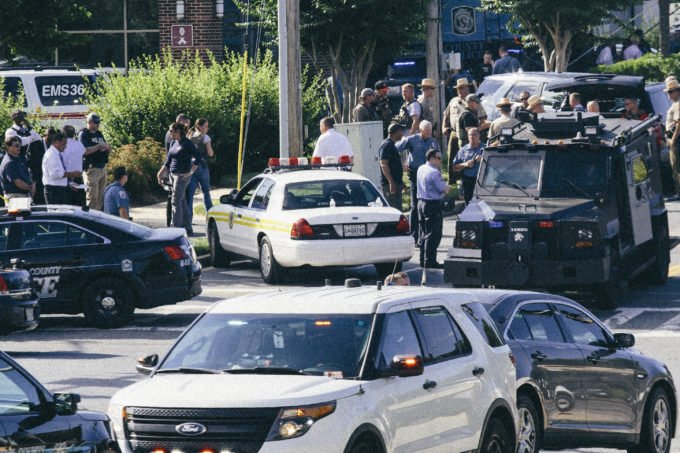
You could work without fear as a journalist in America. Not anymore.

The killing of journalists in Maryland comes at a time when hostility against journalists is increasing around the world—including here at home.
This post originally appeared on June 29, 2018, in Anup Kaphle’s weekly newsletter. Read the archives and subscribe to the newsletter.
Good morning. It’s starting to feel like the news has gotten worse day by day. The murder of five journalists, here at home in the United States, on Thursday afternoon has been particularly devastating, especially for those working in the journalism community.
The shooting at the Capital Gazette newspaper in Annapolis, Maryland, was the 154th mass shooting in the United States this year. Think about that — there have been ONE HUNDRED AND FIFTY-FOUR mass shootings in the last 180 days.
But what makes this shooting particularly significant is that it comes at a time when hostility against journalists is increasing around the world—including here in the United States. According to the Committee to Protect Journalists, which tracks attacks against the press, at least 40 journalists have been killed so far this year. In the United States, seven journalists have been killed in relation to their work since 1992. In 2015, two journalists were shot and killed by an aggrieved coworker. One journalist was killed while covering the 9/11 attacks while six more TV engineers died inside the World Trade Center building that day. Thursday’s massacre makes it the single deadliest day for journalism in the United States since 9/11.
Last month, we wrote about the frequency with which these kinds of attacks on journalists take place outside of the United States. In April, 30-year-old Yaser Murtaja was shot by an Israeli sniper while covering protests in Gaza. A few weeks later, as a group of journalists rushed to cover the scene of an explosion in Kabul, a suicide bomber blew himself up, taking the lives of nine journalists, making it the single deadliest attack on the press since the massacre of 18 journalists in the Philippines in 2009.
Spend a few seconds on the Committee to Protect Journalists site and it will be hard to miss headlines like this.
CPJ calls on Indonesia to investigate death of detained journalist
Local radio journalist killed in northern Brazil
Newspaper reporter gunned down in the Philippines
Some of the places in which journalists operate are dangerous and risky because of ongoing conflicts. Then there are places such as the Philippines, where President Rodrigo Duterte has made it his mission to threaten the press—he often attacks and criticizes journalists individually. He has banned journalists he doesn’t like from covering the presidential palace, said “corrupt” journalists would be killed, and labeled news coverage he doesn’t approve of as fake news.
Unlike Duterte’s attacks on individual journalists, President Donald Trump adopts an aggressive tone against the entire journalism community in the country. He has called reporters “enemy of the people” and berated journalists and questioned their patriotism at his public rallies.
Hours after the attack on Thursday, President Trump tweeted to say his thoughts and prayers are with the victims and his families. But he has, so far, stayed silent on the killing of the five journalists. Nor has he sent any words of condolence and comfort—both to the families of those grieving and the journalism community he has demonized and painted as the enemy.
You can make a donation here to help the journalists and families of Capital Gazette newsroom.